Cate Russell-Cole's Blog, page 30
August 31, 2013
When Is It Time to Take a Breather?
 Reblogged from Healing by Writing:
Reblogged from Healing by Writing:
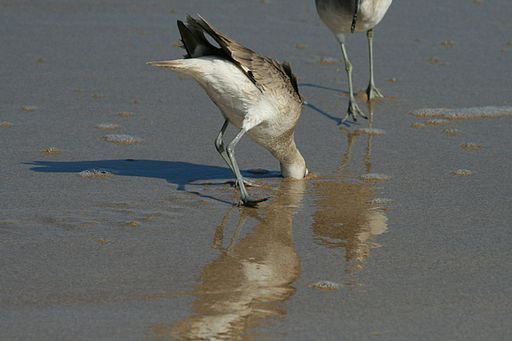

You've worked for weeks to meet a deadline. Day in and day out, almost 24/7 at the computer. Your agent is pushing, and so is the publisher. And your editor is dragging with the last revisions.
Not to mention your blog schedule is scantily filled, and your writing isn't at the top of your game. Then there are the stresses of home, finances, kids and well, just life in general.
Thank you to Sherrey Meyer for the wisdom in this post. I think we all need to hear it... I am partially back on deck after a bad bout of flu. I may not be around much this week. Best wishes.
August 29, 2013
The Ultimate Scrivener How-To: Video Treasure Chest
This is straight from the makers of Scrivener, Literature and Latte. Raid this link for all their videos. The software in available for Mac and Windows. A starter video is below. You are also most welcome to reblog this post.
P.S. It is inspirational video week, as I am on a blog break, gearing up for Independent Author Promotion Month which will be crazy busy! Comments are switched off. Independent Author Promotion Month starts September 2nd Australian, Eastern Standard time.
Independent Author Promotion Month starts September 2nd Australian, Eastern Standard time. The Linky Lists for adding your books will be open until Dec 31st, 2013.

Filed under: "Dose of Inspiration" Video Tagged: author, books, creativity, fiction, ideas, inspiration, plot, resource, Scrivener, story, writer, writing







August 27, 2013
Advanced Creative Writing Story Structure
 “Desire drives the story…” This is part 1 of 12… take your time, take it in and I hope these videos inspire you.
“Desire drives the story…” This is part 1 of 12… take your time, take it in and I hope these videos inspire you.
For free writing lessons via video: http://www.masteredit.net
P.S. It is inspirational video week, as I am on a blog break, gearing up for Independent Author Promotion Month which will be crazy busy! Comments are switched off. Independent Author Promotion Month starts September 2nd Australian, Eastern Standard time.
Independent Author Promotion Month starts September 2nd Australian, Eastern Standard time. The Linky Lists for adding your books will be open until Dec 31st, 2013.

Filed under: "Dose of Inspiration" Video Tagged: author, books, creativity, fiction, ideas, inspiration, plot, resource, story, writer, writing







August 25, 2013
Write Your Story Backwards
 Sometimes a much more surprising and interesting plot can be created if you start at the end of the story and work you way backwards to the beginning. This video will also start you through Cy’s creative writing playlist.
Sometimes a much more surprising and interesting plot can be created if you start at the end of the story and work you way backwards to the beginning. This video will also start you through Cy’s creative writing playlist.
Cy Porter’s website.
P.S. It is inspirational video week, as I am on a blog break, gearing up for Independent Author Promotion Month which will be crazy busy! Comments are switched off. Independent Author Promotion Month starts September 2nd Australian, Eastern Standard time.
Independent Author Promotion Month starts September 2nd Australian, Eastern Standard time. The Linky Lists for adding your books will be open until Dec 31st, 2013.

Filed under: "Dose of Inspiration" Video Tagged: author, books, creativity, Cy Porter, fiction, ideas, inspiration, plot, resource, story, writer, writing







August 22, 2013
Writing Your Way Through Depression

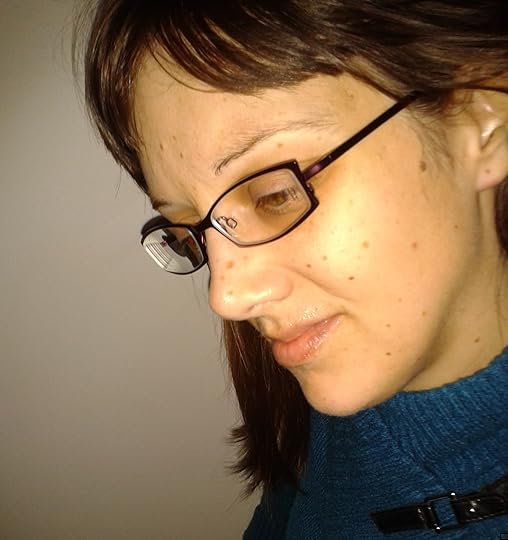 The reasons why people choose to write can vary widely. For me, writing has been an integral part of my healing journey over the past three years. I was in a deep depression when my therapist suggested I begin to write my feelings down in a journal as a way to work through them. Over time, the writings became poems, and those poems became the basis for my book Pathways to Illumination.
The reasons why people choose to write can vary widely. For me, writing has been an integral part of my healing journey over the past three years. I was in a deep depression when my therapist suggested I begin to write my feelings down in a journal as a way to work through them. Over time, the writings became poems, and those poems became the basis for my book Pathways to Illumination.
The Writing Begins
At that time, writing was a scary venture. To write down my thoughts meant that I had to acknowledge them. It was so much easier to be numb than address any feelings. I knew it was probable I would have realizations about my toxic relationship that recently ended and my suicide attempt, when I began to journal.
My therapist did not assign a certain writing style, but she did prompt me with questions to answer in my journal. As I began to write my answers, I did have realizations. I began to explore why my self-confidence was extremely low. I was face-to-face with the assumptions I held about both my body and my surroundings; I had tried to avoid those thoughts for so long.
Along the way, I regained my love for poetry. I had not written poetry lately, although it had been a love of mine throughout my school years. I started to experiment with the lines and found new perceptions emerge as I continued with my therapy sessions. I focused on myself again; it had been a long time since I had allowed myself to do so.
I had another powerful realization. The issues I dealt with were bigger than my life alone. Other women had been, and potentially were still, in abusive relationships similar to the one I experienced.
 Realization Leads to Publishing
Realization Leads to Publishing
That light-bulb moment was my motivation to continue to write poetry, in hopes to put together a published collection designed to help women. Depression, anxiety, and abuse were the themes I delved into with my writing. Slowly, word by word, I created the poetry collection. I healed as I wrote about a woman who still held pieces of hope even after her life shattered around her. I tied in parts of my own experiences, although the book is not a memoir.
I healed so much as I wrote the poetry book. The cathartic nature of writing is evident, whether one chooses to journal, essay, pen poetry, or other style of choice. I worked through many feelings as I wrote Pathways to Illumination and I hope readers understand that they are not alone. I hope the book comes to readers as a warm blanket on a quiet day, with its comforting text and photography.
Meet Christy
Christy Birmingham is a freelance writer, author and poet. She lives in British Columbia, Canada, where she enjoys walks on local trails and time relaxing with close family and friends. She shares her experiences about depression, anxiety, and abuse to help others who may suffer. Enjoy more of her poetry at Poetic Parfait and connect with her on Twitter.
This blog post is Copyright Christy Birmingham 2013. All rights are reserved Internationally. You may not reproduce it in any form, in part of whole, without the author’s prior written permission. That includes usage in forms such as print, audio and digital imaging including pdf, jpg, png etc. A fee may be requested for re-use if it is for a commercial venture.
Filed under: "Writing Lessons from the Writing Life" Tagged: abuse, author, books, depression, discovery, goals, growth, healing, inspiration, life story, memoir, mental health, poetry, problem solving, psychology, recovery, suicide, writer, writing







August 20, 2013
Stopping Writing Distractions: A Life Saving Piece of Cheap Software
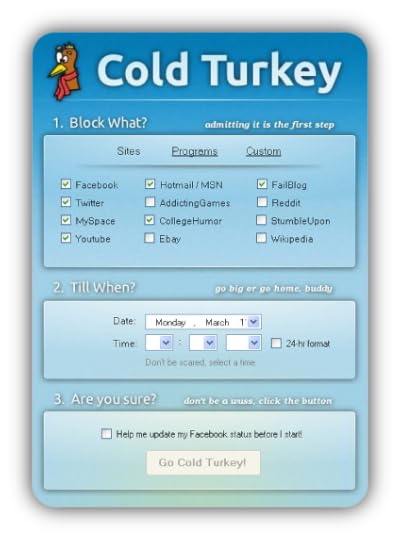 Writer, Dawn Montgomery, put me onto this software. If you are forever stuck on Internet sites that mean you don’t get work done, but you can’t turn off your connection for practical reasons, (she needs Skype to keep in touch with family), then this will save your bacon!
Writer, Dawn Montgomery, put me onto this software. If you are forever stuck on Internet sites that mean you don’t get work done, but you can’t turn off your connection for practical reasons, (she needs Skype to keep in touch with family), then this will save your bacon!
Quoting Dawn: “Let me tell you about Cold Turkey. First of all, it’s free, though it runs on donations. Don’t worry, you have the option of donating later if the program works for you (and I WILL, since I love this program!). There isn’t a version available for Mac, but if you look at the FAQs on the Cold Turkey page, it shows you what software WILL work for you guys (We’re half Mac/half PC so knowing this stuff is a big deal for us all).
Here’s how it works:
You bring up the program
Agree to the blocked website list by clicking in the check boxes
Add any additional websites or programs from your computer (WoW? Solitaire? Plants vs Zombies? Pinterest? )
Tell it how long you’re blocking it for (It even gives me the option of a 24 hour clock. That makes my heart happy)
Engage the program. It asks if you’re SURE. LOL. Smart program. When you say yes, it does exactly what you ask.
Some things to know before you begin:
 You will not be able to get to those locations no matter what. So, if youtube is blocked, a gray screen with a broken link shows up where someone has posted a video. Blocked websites will show up as “Site not available”. Nice, right? Blocked Programs you attempt to open on your computer will not work.
You will not be able to get to those locations no matter what. So, if youtube is blocked, a gray screen with a broken link shows up where someone has posted a video. Blocked websites will show up as “Site not available”. Nice, right? Blocked Programs you attempt to open on your computer will not work.There is no way to stop it. (Disclaimer, if you’re really talented with computers and don’t mind playing around in files you shouldn’t, you can stop the program. Or you can go back to Cold Turkey and follow the FAQs about getting rid of it). For the rest of us: Restarting your computer won’t stop it. Force-quitting the program won’t stop it. Once you set up your time, it’s done (unless you go back to the site and download the uninstall program).
Restart your computer after you install the program. I ended up having to restart mine at the end of my first session because I didn’t get the automatic popup.
Close the programs/webpages you’re going to block before you begin. Keeps it simple and prevents some *interesting* side effects.
Don’t worry about adding every program and website that distracts you. You can add those at any time in the process.”
Filed under: Writing Resources Tagged: author, Cold Turkey, focus, goals, novel, problem solving, procrastination, resource, writer, writing, writing distractions, writing time







What is Four Dimensional Characterisation?
Before I began teaching, I became a social worker. One of our lecturers gave us a sound piece of counselling advice that is also a brilliant tool in writing about fictional or real characters. ‘People behave in patterns. Look for the patterns, then you can start to understand what drives them.’ Identifying patterns helps you see their weaknesses, strengths and what genuinely makes them tick.
Characters appear not just in works of fiction. If you are writing an autobiographical or family history piece, describing people you know using characterisation techniques will make them come alive in the reader’s mind, assisting the reader in relating to the person you’re talking about, even if that person is you!
People are at least four dimensional. We have our three dimensional physical form, which you can describe in terms of:
How people look: hair, eye colour, height, preferred clothing.
Mannerisms such as sitting a certain way, nodding frequently when listening, nervous habits.
How they smell: do they regularly use tobacco, cook with garlic or use a signature cologne.
What their voice, cough, sneeze, singing or laugh sounds like.
Problematic or distinctive characteristics such as oily hair, dry skin or uneven ears.
The fourth, and mostly unseen dimension, is their positive or negative life experiences that replay in their subconscious mind, motivating their behaviour and driving their emotions. This dimension is what produces most patterns and most people don’t even realise that they exhibit these patterns or what is really behind them. As a writer, this gives you a great plot line as your characters can either find themselves or get more lost along the way. You have more room for explorative narratives.
 So what kind of patterns can you build into a character, or use to drive a storyline? You have a choice of positive and negative patterns. It is easy to limit your characters and bias your writing by placing the focus on negative behaviours. You can limit them to being the serial womaniser; the bully; the shy person; the issue avoider; the addict; the co-dependent; the unlucky in love or the self destructive. Try and also consider people’s strengths: confidence in their ability in a specific area; kindness towards strangers or animals; a belief one day they will make it no matter what; love of family; strong faith or intuition; determination; emotional stability. What do they value the most? What will they fight to achieve? That way you will have a more balanced personality and more avenues to explore in your storyline.
So what kind of patterns can you build into a character, or use to drive a storyline? You have a choice of positive and negative patterns. It is easy to limit your characters and bias your writing by placing the focus on negative behaviours. You can limit them to being the serial womaniser; the bully; the shy person; the issue avoider; the addict; the co-dependent; the unlucky in love or the self destructive. Try and also consider people’s strengths: confidence in their ability in a specific area; kindness towards strangers or animals; a belief one day they will make it no matter what; love of family; strong faith or intuition; determination; emotional stability. What do they value the most? What will they fight to achieve? That way you will have a more balanced personality and more avenues to explore in your storyline.
If your character has been through a particular life experience, do a little research into the psychology behind it. It will assist you in building in personality traits and behaviour patterns which make them realistic. For example, on the “My Way Out” web site, Mario is talking about the patterns of behaviour you see in adults who come from families which were neurotic or alcoholic. He identifies six dominant behavioural patterns: the caretaker, people pleaser, martyr, workaholic, perfectionist and stump.

Peace Sign fabric by Alexander Henry
While those roles may look like cliches or stereotypes, many times it is the common attributes of people who have lived through these situations that give rise to those images, so you can’t always write them off as overused. Again, look for positive traits as well. The traits of a survivor pull people through their past and present challenges. They are strong motivators which can fuel heroes and heroines, including the every day kind who aren’t overthrowing evil or slaying dragons.
This post was the inspiration for the book “Creating and Resolving Conflicts in Fiction,” the first book in the Four Dimensional Characterisation Series. This book will give you an insight into simple psychology that can be used to build characters and plot lines. It’s an easy, non technical read that will assist you in making your characters realistic, unique and believable. “Creating and Resolving Conflicts in Fiction“ focusses on conflict in any kind of relationship. How you can create it, build it, then resolve it throughout any plot line, regardless of the characters or genre.
If you are writing autobiography / memoir it will still help you, as it will make you aware of how conflicts in your life have functioned and why incidents turned out the way they did.
This book is only available from Amazon http://www.amazon.com/dp/B00856U6IC
Thank you too, to Shelly Immel from the Big Life Project, who said:
“I’ve enjoyed Cate Russell-Cole’s posts for writers about character psychology, and here’s more depth pulled together into a book. SWEET! Cate Russell-Cole’s got pyschology chops, which shows in the depth and professional accuracy of the info she presents. And she understands writing, which shows in the useful way she selects and presents psychology to help writers build characters and plot. I can’t wait to read this book! (As soon as I find out how to get it for the Nook…)”
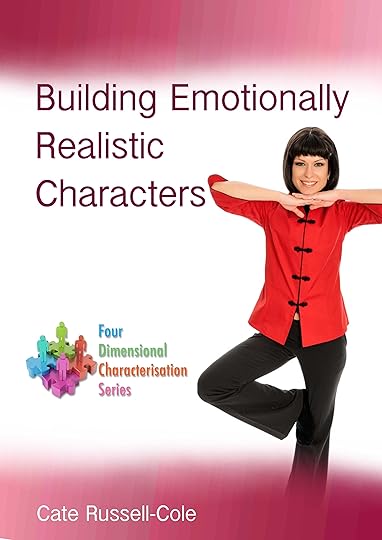
The second book in the Four Dimension Characterisation series is the newly released, “Building Emotionally Realistic Characters.” Whether you are writing fiction, memoir, poetry, short stories, plays, screenplays or music, the ability of your work to touch others depends on how they relate to the messages you are conveying. What they see and hear must be something they have encountered and can relate to easily; or it must be shared in another way they can grasp. Often that is done through the only common element every human being has: knowing what emotions feel like.
You can read a story about events which have never happened to you, but still laugh or cry over what is occurring with the characters. Why? Because you know what it is to experience pain, joy, fear, rejection, envy, fatigue, laughter, grief, ecstasy or doubt too. This is the magic that makes stories work. The tricky part, is conjuring up the right spell or your reader will not be fooled.
Topics include: change, motivation, healing emotional trauma, post traumatic growth, grief, shock, super-egos and inferiority, escapism, fatal flaws, phobias, shame, violence, character types, suicide prevention, schizophrenia and multiple personality disorder. This is the second book in the Four Dimensional Characterisation Series.
This article / blog post is Copyright Cate Russell-Cole 2012. All rights are reserved Internationally. You may not reproduce it in any form, in part of whole, without Cate’s prior written permission. That includes usage in forms such as print, audio and digital imaging including pdf, jpg, png etc. A fee may be requested for re-using her work if it is for a commercial venture. Link sharing and Pinterest pins are most welcome as long as Cate is the attributed Author.
No images on this blog may be copied, captured, or altered for your own purpose without the consent of the originating owner. Where images are marked as being iStockphoto.com images, they are paid for and licenced to Cate for use on this blog. If you take them, iStockphoto.com has the right to take legal action against you for Copyright Infringement.
Please see the Blog Content and Image Copyright page of this blog for further information in regards to Guest Posts, other images, Cate’s checks on infringements and Liability.
Filed under: Writing Resources Tagged: autobiography, behaviour, biography, character, characterisation, dimension, family history, fiction, hero, heroine, inspiration, life story, mind, pattern, patterns of behaviour, problem solving, psychology, subconscious, thinking, writer, writing







August 19, 2013
A Healthy Approach to Editing a Chaotic Draft: It's About Mindset
 Reblogged from Creative Writing with the Crimson League:
Reblogged from Creative Writing with the Crimson League:

Right now, I am most definitely dealing with a chaotic first draft. The story is there, but it has issues on every level. Rather than give in for any longer to feeling overwhelmed--feeling overwhelmed has kept me from editing for the last few days--I thought I would explore the beauty that is a chaotic first draft.
Really, there's no need to panic and throw in the towel when you finish a novel and think: this is garbage, and it doesn't hold up, and I have no idea what to do with it.

Keep a copy of this post in your writing survival toolkit! Thanks Victoria!
August 17, 2013
Independent Author Month: Critical Dates for Submitting Your Book Links for Promotion
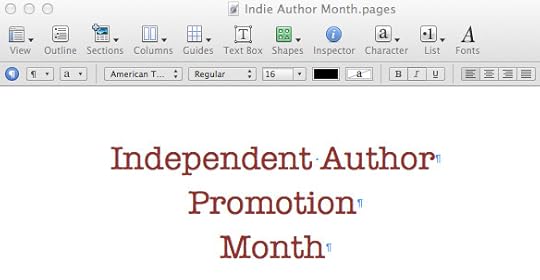
CommuniCATE is hosting numerous genre categorised lists where Independent Authors can share their work, plus a series of resource and inspirational posts specifically for Indies. It kicks off on September 2nd, Australian Eastern Standard time (my Monday morning is roughly your Sunday night if you are in the United States.)
The month will be packed solid with posts six days a week, so below is the list of when your genre will come online on this blog. These are not links to the lists! When the Lists come out, they can also be used as blog hops, so please share your genre list on your blog. (Doing so may improve your traffic.)
2nd Sept: Romance Authors
7th Sept: Christian works: all devotions, novels, reference books, children’s etc. as long as they are Catholic or Protestant Christianity in some form. This does not include Seventh Day Adventist, Mormon or Christian Science. Sorry, I have had to draw lines to cram everything in!
9th Sept: Paranormal / Horror – the really scary stuff!
12th Sept: Crime and Suspense
16th Sept: anything in the Young Adult genre (no mature aged content / erotica. I haven’t seen YA erotica, but I’d bet my last chocolate biscuit, someone writes it.)
18th Sept: Memoir / Autobiography / Life Story (Biography is 26th.)
23rd Sept: Science Fiction / Fantasy and mixed genres along those lines.
26th Sept: Non-Fiction including sports, travel guides, cookbooks, text books, biography, crafts, manuals, technical writing etc.
1st October: Poetry, as October is poetry challenge month, I left this genre as a launch.
 All Linky Lists will be open until December 31st, 2013 and these posts and lists won’t ever be removed off this blog. You can enter your website, author pages, blog: whatever you wish. See the actual post for details. I will manually remove multiple entries, spam and erotica from the list over time.
All Linky Lists will be open until December 31st, 2013 and these posts and lists won’t ever be removed off this blog. You can enter your website, author pages, blog: whatever you wish. See the actual post for details. I will manually remove multiple entries, spam and erotica from the list over time.
Plus please note, this is only for Indie authors: any work you have published through a publishing company which sells through book shops, chains or other traditional routes will not be eligible. Authors who have published multiple works through both traditional and Indie sources can list only their Indie works.
When you enter your work into these lists, please also take the time to go visit others in your genre and pass on the love.
 As setting up Independent Author Month and the Write Your Life Story blog and Challenge has taken up so much time, for the next two weeks I am stepping away from social media, etc. as much as I can.
As setting up Independent Author Month and the Write Your Life Story blog and Challenge has taken up so much time, for the next two weeks I am stepping away from social media, etc. as much as I can.
Next week, CommuniCATE will feature a series of awesome writing videos. All comments are turned off. I am ** “going Viking” (gone exploring, trading and raiding) to finish projects.
Best wishes everyone.
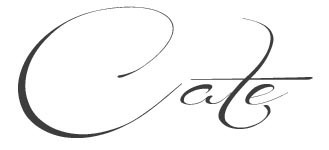
** The “Vikings” are not a people group: the Norse people were labelled Vikings, as first contact, (which was often not terribly pleasant,) was with raiders, traders, settlers and the Norse who were out and about “going Viking.” It is a verb.
 Catch up with the “Write Your Life Story” Blog and Writing Challenge
Catch up with the “Write Your Life Story” Blog and Writing ChallengeBlog: http://writeyourlifestoryblog.wordpress.com
Facebook: http://www.facebook.com/pages/Write-Your-Life-Story/173393852705651
Google Plus: http://plus.google.com/communities/112990534902148227158
Twitter: http://twitter.com/cateartios
Filed under: Independent Author Promotion Month Tagged: author, blog, blogging, books, encouragement, fiction, ideas, Independent Author Promotion Month, Indie publishing, inspiration, novel, promotion, resource, support, writer, writing







The Danger of a Single Story
 “At about the age of seven … I wrote exactly the kinds of stories I was reading: All my characters were white and blue-eyed, they played in the snow, they ate apples, and they talked a lot about the weather: how lovely it was that the sun had come out. This despite the fact that I lived in Nigeria; we didn’t have snow, we ate mangoes, and we never talked about the weather, because there was no need to.”
“At about the age of seven … I wrote exactly the kinds of stories I was reading: All my characters were white and blue-eyed, they played in the snow, they ate apples, and they talked a lot about the weather: how lovely it was that the sun had come out. This despite the fact that I lived in Nigeria; we didn’t have snow, we ate mangoes, and we never talked about the weather, because there was no need to.”
“The single story creates stereotypes, and the problem with stereotypes is not that they are untrue, but that they are incomplete. They make one story become the only story.”
Carrie left me a link to this talk on the the “Presumption of Stupidity” post I published last week. I am glad she did. It has touched me deeply and made me consider how the books I have read have influenced me. I’d like to share it.

From TED Talks: “In Nigeria, Chimamanda Ngozi Adichie’s novel Half of a Yellow Sun has helped inspire new, cross-generational communication about the Biafran war. In this and in her other works, she seeks to instill dignity into the finest details of each character, whether poor, middle class or rich, exposing along the way the deep scars of colonialism in the African landscape.
Adichie’s newest book, The Thing Around Your Neck, is a brilliant collection of stories about Nigerians struggling to cope with a corrupted context in their home country, and about the Nigerian immigrant experience.
Adichie builds on the literary tradition of Igbo literary giant Chinua Achebe—and when she found out that Achebe liked Half of a Yellow Sun, she says she cried for a whole day. What he said about her rings true: “We do not usually associate wisdom with beginners, but here is a new writer endowed with the gift of ancient storytellers.”
Filed under: "Dose of Inspiration" Video Tagged: author, bias, Chimamanda Ngozi Adichie, education, fiction, ignorance, influence of books, inspiration, Nigeria, stereotypes, success, writer
















